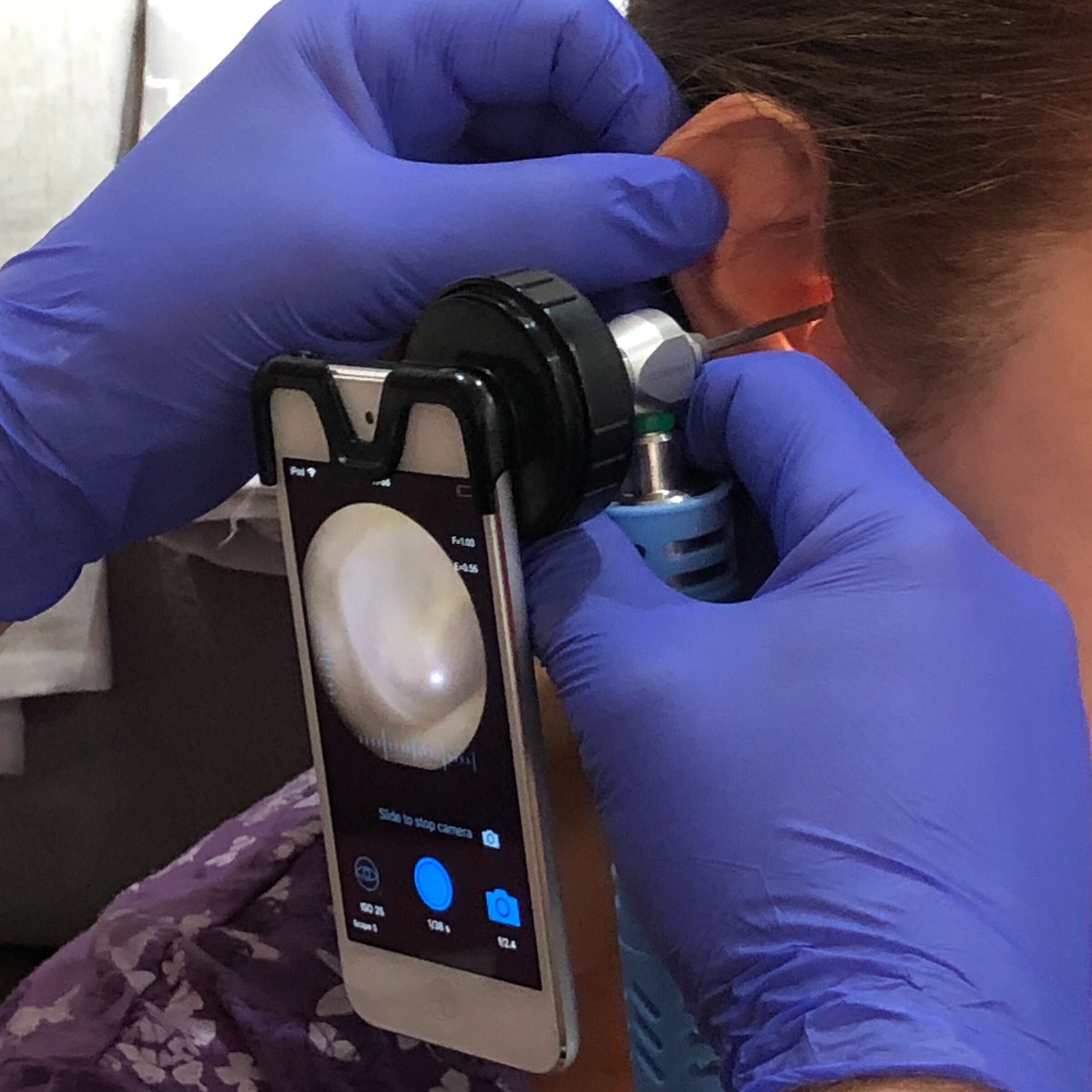
Endoscopic Microsuction is becoming the more popular procedure to remove ear wax – where the Audiologist, Hearing Aid Dispenser or ENT Doctor uses a visual camera (an oto-endoscope) which the specialist slowly inserts into the ear canal.
This helps to clearly display the wax removal process: whether using low-pressure microsuction with a sterile tip, or using manual methods with an ear hook or Jobson Horne
The endoscope is an instrument used to look inside the body, and when attached to a video monitor, such as an iPod (using an “iCLEARscope®” from CLEAR WAX) which our “WaxBuster” audiologists use, the barrel packs a battery which emits a bright light source which clearly illuminates the inside of ear canal in HD (high definition) quality. This provides a detailed, panoramic view of the entire ear canal and eardrum – helping the specialist to perform safe, effective ear wax removal.
Roger Stokes, one of our audiologists, who qualified in 1994, actually prefers to always look into patients’ ear canals using the endoscope as it gives a much clearer, detailed picture/video inside the ear canal than a traditional otoscope – particularly of the health and condition of the eardrums (tympanic membranes).
The beauty of this is being able to show the patient the inside of their canals using the iPod images and video recordings.
The procedure is usually performed with the patient seated comfortably, with the head tilted to the side, to facilitate easier access to the ear canal.
As the specialist can watch the procedure in detail via the iPod, it makes it much quicker, safer and more comfortable than ear syringing or ear irrigation.
Our Endoscopic microsuction sessions can take between 10-30 minutes. However, this can vary depending on the amount and type of wax, how deep it is and whether you are having one or both ears cleared.
Generally, it is not necessary to use ear drops to soften the wax for several weeks as often advised. However, we do usually recommend using Earol (olive oil spray), or Almond oil for 3-4 days prior to the wax removal appointment. If you are aware of an infection or a perforated eardrum, we do not advise using any drops at all.
No water is jetted into the ear canal at all – this is a “dry” procedure, therefore reducing the risk of infection or accidentally pushing the wax further down into the ear.
Endoscopic microsuction can be used even if your eardrum is perforated, or if you have a grommet inserted, a mastoid cavity or a cleft palate – conditions which should not have the water irrigation/syringing method!
Endoscopic wax removal was clinically found to be quicker, easier and more comfortable than microscopic microsuction in a clinical study¹ which compared the two methods.
It must be made clear that no method of wax removal is totally risk-free. There are some risks, which we detail to our patients when they arrive for their appointment. These can be as follows: possible trauma/damage to the eardrum (including perforation); a temporary or permanent hearing loss due to the sometimes loud noise in the canal; possible tinnitus or worsening of a pre-existing condition (although this is rare) and also possibly making the patient feel dizzy, faint or experience vertigo – this can be as a result of the process cooling the temperature inside the ear canal – although rare, it is usually short-lasting.
1 Potier D.D., Hall C. & Gillett S. (2006) A comparison of endoscopic and microscopic removal of wax: a randomised clinical trial. Clin. Otolaryngol. 31, 375-380
Created with the aid of Liberty Murray (Hear4U Health Care Assistant)